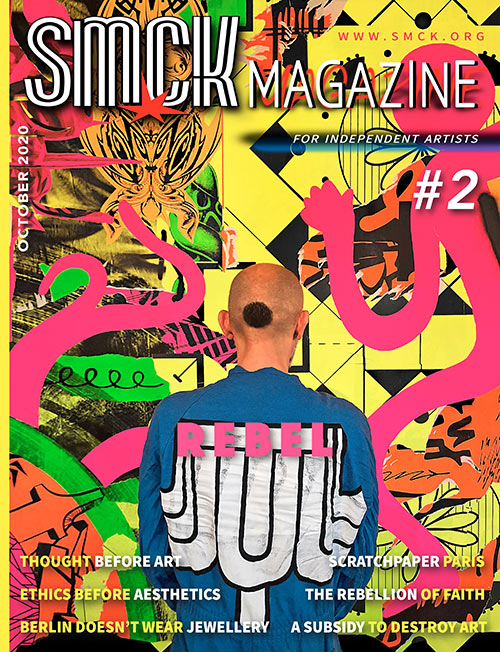THE BASICS OF PEACE
NATURE DESPISED AND DESTROYED WITHOUT MERCY
By Manon Pana-Kairi
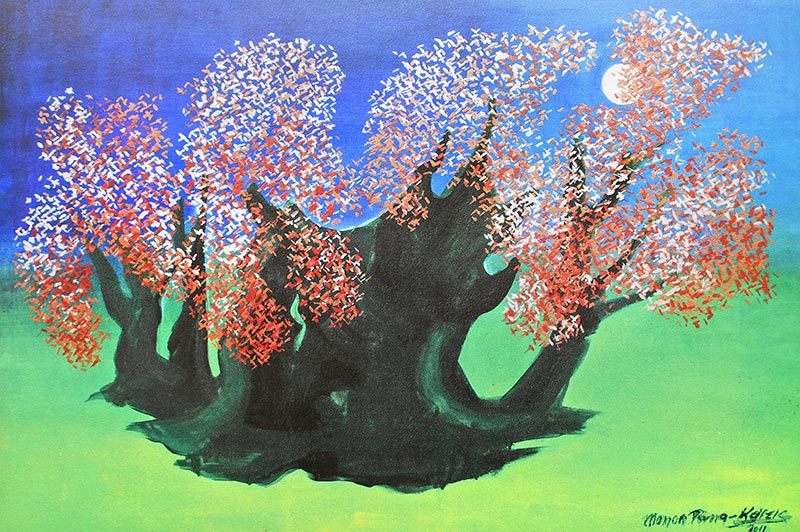 Olive Tree. Oil on canvas, 2011. Photo: Christoph Ziegler
Olive Tree. Oil on canvas, 2011. Photo: Christoph Ziegler
Ecology has always been a source of inspiration for me. I painted animals, flowers, and trees in a child-like manner to awaken children's interest, to inspire them to save the living creatures surrounding us, those creatures modern civilization despises, torments and destroys without mercy or shame. I paint children because they are probably the only human beings who are still pure and do not wish to destroy nature. Every child has an unconscious, automatic way to connect with nature.
A tree is life springing from the earth. Trees are the soul of the earth. Trees do feel and suffer. If you ever see a forest on fire, you see how painfully trees fall when they burn. It feels like a man is murdered. Trees are the jewels of the earth.
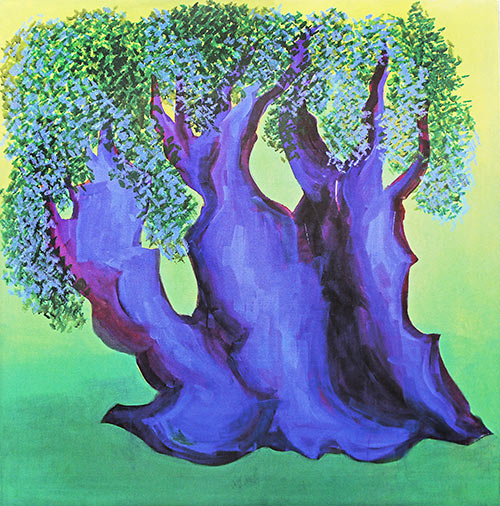
Olive Tree. Oil on canvas, 2011. Photo: Christoph Ziegler
The first ecological theme I painted was the olive tree; more precisely the olive grove of Athens, the area still called by its Greek name, Elaionas. The olive tree is Greece; it has been a sacred tree ever since the most remote Antiquity.
Every family used to have its own olive tree in the old days for it embodies everything you need to live and prosper. Its fruit was the main ingredient of ancient medicine, the amalgam that penetrates human diet, economy, healing, cosmetics. Walking through Elaionas, a few years ago, I noticed how many very old trees are still alive. Even in winter, the olive tree keeps its leaves, it never changes; it reminds me of Greece remaining unharmed throughout its history.
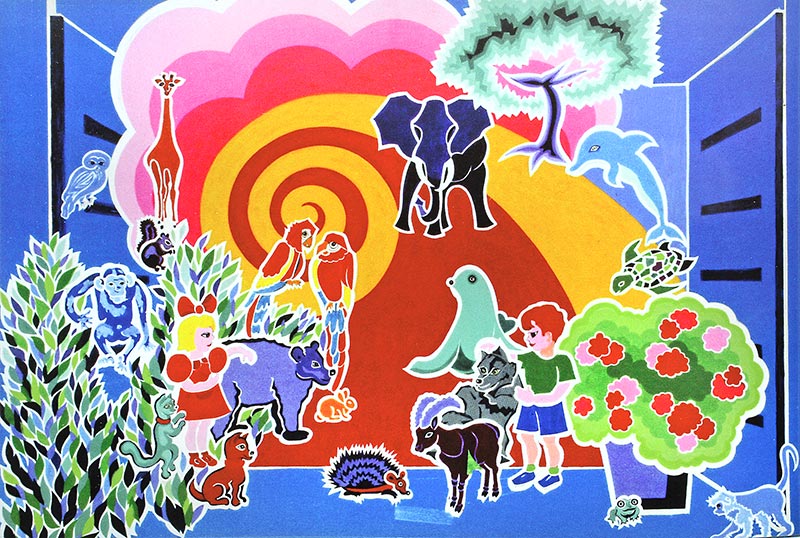 "A Window Looking Out Into Hope (I)". Mixed media, 2004. Photo: Christoph Ziegler
"A Window Looking Out Into Hope (I)". Mixed media, 2004. Photo: Christoph Ziegler
I tried to illustrate the harmony of nature which the olive tree reflects. It is a peaceful being and has a calming effect on man. Elaionas made the city landscape look peaceful, even in our times; it has been despised and destroyed without mercy. My Olive Trees series aimed to remind of the troubles Elaionas has undergone. I have exhibited this series at the Museum of the City of Athens and in the Cité des Arts in Paris.
The olive tree is also the tree of peace.
In 1985, I was awarded the second İpekçi Prize for contributing in the Greek-Turkish friendship. The award was established by Andreas Politakis, a Greek engineer from Constantinople. His initiative aimed at reducing the animosity stemming from political and economic rivalry between the two countries.
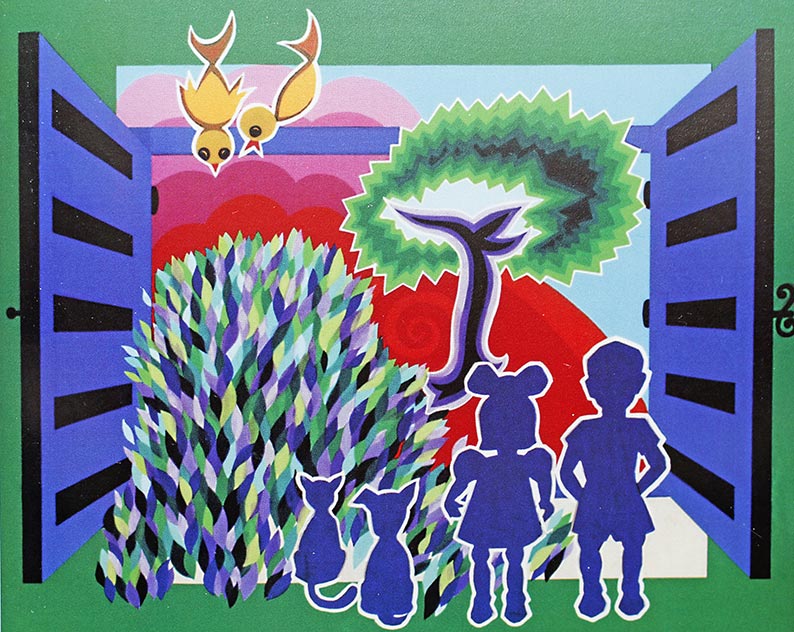
"A Window Looking Out Into Hope (II)". Mixed media, 2004. Photo: Christoph Ziegler
For the Greeks, the Turkish conquest of Constantinople in 1453 is the source of their faith that Greece shall live. Greeks remember their city of Constantinople, the purges, the murders, and the endless hostility; this history cannot be forgotten. The İpekçi Prize attempted to soften these memories, to put aside pain, strife, war, and troubles. The İpekçi Prize was named after Abdi İpekçi, a Turkish journalist and advocate of minority rights, who was murdered by the far-right Grey Wolves in 1979.
ELAIONAS
The olive tree was Athena's sacred gift to the city, which was named after her. Today the 9,500-acre olive grove is mainly an industrial zone.
GREEK-TURKISH FRIENDSHIP
The concept of Greek-Turkish friendship was first promoted in the 1930s by Greece's then-prime minister Eleftherios Venizelos and Turkey's then- president Mustafa Kemal to guarantee peace between the former foes. The desecration of the Greek churches of Agia Sophia and Chora Monastery in Constantinople/Istanbul by Turkey's Islamist president, Recep Tayip Erdogan, this past summer has destroyed any hope that Greek-Turkish initiatives may effectively promote tolerance, respect, and understanding at the moment.
____________________________
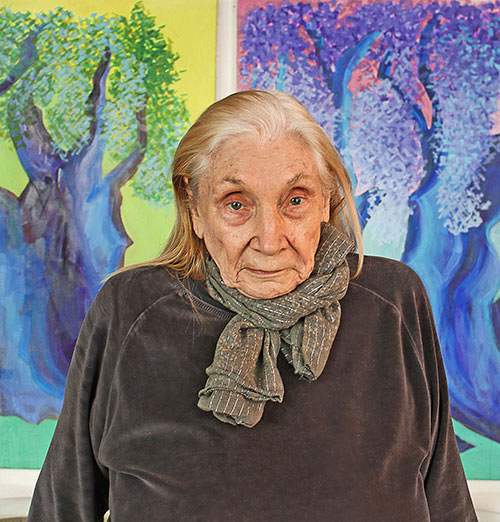
Manon Pana-Kairi Photo: Chr. Ziegler
Manon Pana-Kairi (*1931, Athens) studied Fine and Applied Art in Athens, London, and Paris. She has worked in the fields of painting, theater costume and stage design, graphic design, and interior design for almost seven decades. She has been a member of the Société des Artistes Indépendants since the early 1970s, and also held solo shows and participated in group exhibitions in Europe. She has won various art distinctions, as well as the second İpekçi Prize.








